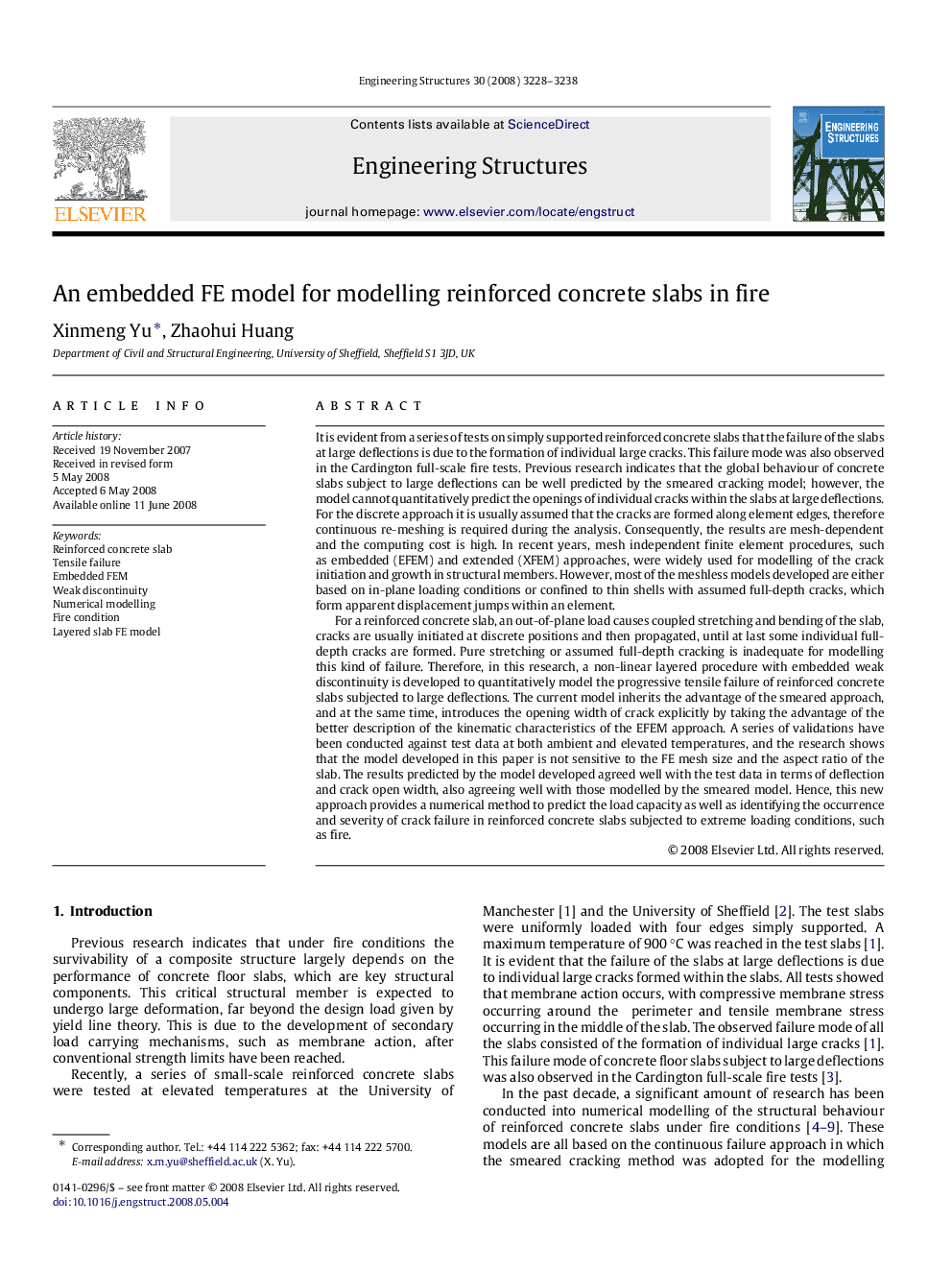| Article ID | Journal | Published Year | Pages | File Type |
|---|---|---|---|---|
| 268797 | Engineering Structures | 2008 | 11 Pages |
It is evident from a series of tests on simply supported reinforced concrete slabs that the failure of the slabs at large deflections is due to the formation of individual large cracks. This failure mode was also observed in the Cardington full-scale fire tests. Previous research indicates that the global behaviour of concrete slabs subject to large deflections can be well predicted by the smeared cracking model; however, the model cannot quantitatively predict the openings of individual cracks within the slabs at large deflections. For the discrete approach it is usually assumed that the cracks are formed along element edges, therefore continuous re-meshing is required during the analysis. Consequently, the results are mesh-dependent and the computing cost is high. In recent years, mesh independent finite element procedures, such as embedded (EFEM) and extended (XFEM) approaches, were widely used for modelling of the crack initiation and growth in structural members. However, most of the meshless models developed are either based on in-plane loading conditions or confined to thin shells with assumed full-depth cracks, which form apparent displacement jumps within an element.For a reinforced concrete slab, an out-of-plane load causes coupled stretching and bending of the slab, cracks are usually initiated at discrete positions and then propagated, until at last some individual full-depth cracks are formed. Pure stretching or assumed full-depth cracking is inadequate for modelling this kind of failure. Therefore, in this research, a non-linear layered procedure with embedded weak discontinuity is developed to quantitatively model the progressive tensile failure of reinforced concrete slabs subjected to large deflections. The current model inherits the advantage of the smeared approach, and at the same time, introduces the opening width of crack explicitly by taking the advantage of the better description of the kinematic characteristics of the EFEM approach. A series of validations have been conducted against test data at both ambient and elevated temperatures, and the research shows that the model developed in this paper is not sensitive to the FE mesh size and the aspect ratio of the slab. The results predicted by the model developed agreed well with the test data in terms of deflection and crack open width, also agreeing well with those modelled by the smeared model. Hence, this new approach provides a numerical method to predict the load capacity as well as identifying the occurrence and severity of crack failure in reinforced concrete slabs subjected to extreme loading conditions, such as fire.
